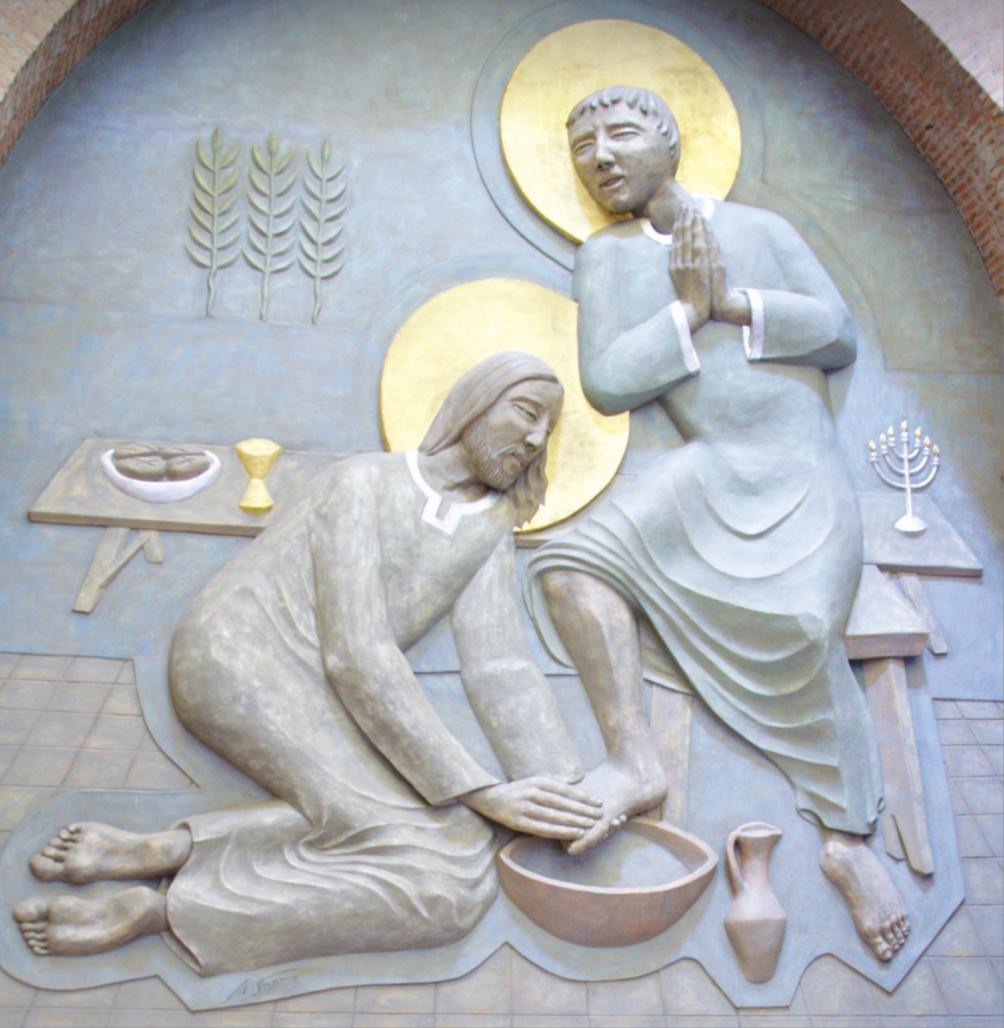Washing of the Feet – a Gesture of Love
 As a result of a direct intervention by Pope Francis, the situation regarding the Washing of the Feet has been clarified. On 20 December 2014 he wrote to Cardinal Robert Sarah, the Prefect of the Congregation for Divine Worship, and in January it was announced that the rubrics in the Roman Missal for the Holy Thursday service have been revised. The group chosen to participate in the ceremony will now represent the variety of individuals that make up the one People of God. It should include men and women, and, if possible, young and old, the healthy and the sick, lay people and clerics and those in the consecrated life.
As a result of a direct intervention by Pope Francis, the situation regarding the Washing of the Feet has been clarified. On 20 December 2014 he wrote to Cardinal Robert Sarah, the Prefect of the Congregation for Divine Worship, and in January it was announced that the rubrics in the Roman Missal for the Holy Thursday service have been revised. The group chosen to participate in the ceremony will now represent the variety of individuals that make up the one People of God. It should include men and women, and, if possible, young and old, the healthy and the sick, lay people and clerics and those in the consecrated life.
Significantly, the decree does not simply permit women to be among those whose feet are to be washed, but states that this group should visibly reflect the gathering’s make-up. Moreover, by citing the Gospels three times, it gives a clear steer on how foot washing can be understood: an experience of how Christians ought to relate to one another.
Foot washing has come to be seen in recent centuries as either a piece of theatre, a showy demonstration of humility by those in power, or as an act of obedience to the command to love the poor (hence “Maundy Money” could replace a royal foot washing). But the text of John is quite explicit: the purpose of foot washing is to help everyone in the community discover how they are to relate to one another as disciples. Each must be prepared to wash the feet of the other. It enacts the mutual relationship of service that constitutes our distinctive community and is the practical face of the love we should have for one another.
Foot washing has to move from being a quaint ritual – that can be dodged when inconvenient – to being a fulfilment of the Lord’s will for our behaviour when we gather together. It models what it is to be Church.
Extracts from an article by Thomas O’Loughlin
The Tablet, The way of discipleship
17 March 2016
